| |
|
|
| |
Mira Mar Veterinary Hospital
|
|
| |
|
|
| |
|
|
| |
|
|
|
|
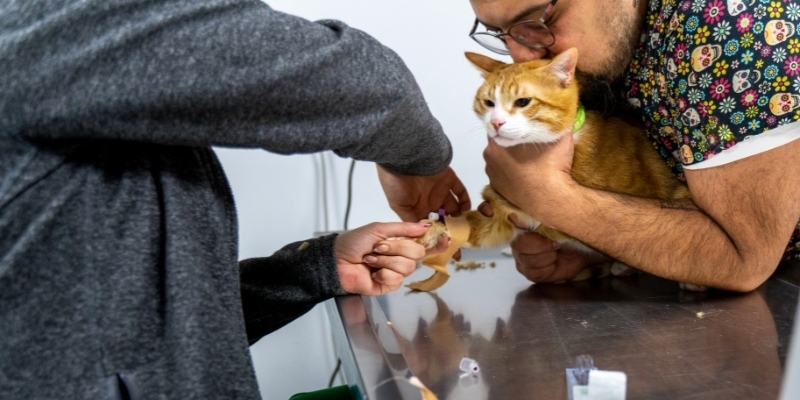
|
| |
A thorough investigation
|
|
| |
|
|
| |
If your pet is aged eight or older and seems generally healthy, do they need annual blood and urine tests and blood pressure checks?
Yes, here are three reasons why performing these tests routinely in older pets is a good idea:
1. Blood and urine tests can lead to the earlier detection of health problems and better outcomes for the pet
Whilst physical examination is an excellent way of checking the general condition of an older pet, it doesn’t always tell us about more subtle internal health issues.
For example, let’s consider chronic kidney disease (CKD), estimated to occur in 30-40% of cats over ten years of age.
Vets grade the progression of CKD in affected cats in four stages, with Stage 1 being mild disease and Stage 4 being severe disease. In cats with Stage 1-2 disease, obvious external symptoms of unwellness are usually mild or absent. However, blood and urine tests can detect these earlier stages of CKD, and scientific studies have shown that diagnosis and management of CKD in early stages often leads to a longer survival time for the pet (and usually better quality of life for the pet during that time too).
2. High blood pressure can be a “silent” danger
High blood pressure in pets commonly occurs secondary to other health conditions, such as an overactive thyroid in cats or Cushing’s disease (overactive adrenal function) in dogs. Still, it is often not detectable on routine physical examination alone.
Unfortunately, significantly elevated blood pressure causes damage to other organs, such as the kidneys, heart and brain. It can lead to sudden blindness due to retinal damage.
3. It’s always helpful to know about your pet’s general organ health
When pets get injured and require an urgent procedure or surgery, it’s good to have up-to-date blood tests to tell us about their recent organ health so we can proceed as safely as possible.
For more advice on keeping your older pet in tip-top health, consult our helpful team. |
|
|
|
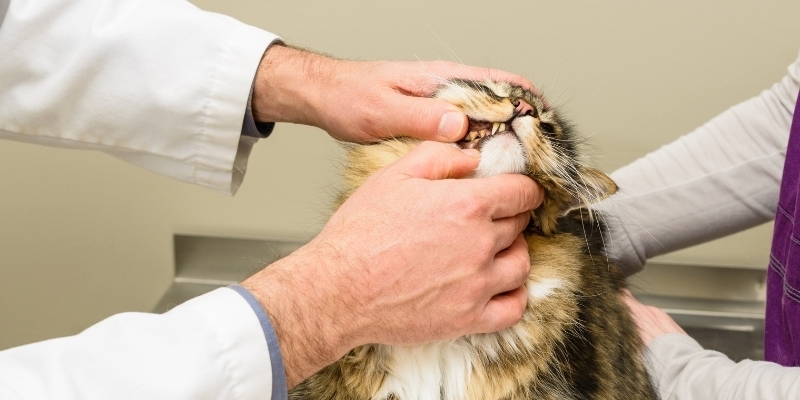
|
| |
Let's get physical!
|
|
| |
|
|
| |
Did you know that our vets love it when things get physical? We're referring, of course, to the importance of a good physical examination for assessing your older pet's general health, comfort and condition! Whilst every pet gets a nose-to-tail assessment, here are the four things we focus on when examining a middle-aged to older pet:
Dental Health
Unfortunately, dental disease can affect not only your pet's quality of life and comfort but also their general organ health. To assess your pet's dental health, we will smell their breath (not our favourite job, admittedly!), palpate around their face and jaw, and then assess their mouth for any gum swelling or inflammation, brown calculus build-up, exposed tooth roots, or fractured or missing teeth.
Heart health
With mitral valve disease (one of the most common heart problems seen in dogs) occurring mainly in middle-aged to older pets, we are particularly vigilant about checking the hearts of older pets. We will count the pet's heart and pulse rate and assess the sounds and rhythm of their heart for any abnormalities.
Joint comfort
Arthritis is widespread in older pets due to general wear and tear . We also see it in younger to middle-aged pets who have suffered from a previous joint injury or developmental problem (such as hip dysplasia). As part of your pet's physical examination, we will check their general mobility and assess their joints' comfort and range of motion. We will also check for any muscle loss that could suggest a particular area's reduced function.
Lump checks
Unfortunately, older pets are more likely to develop lumps and bumps, some of which may be a worry and require prompt treatment. We'll check in your pet's mouth and feel over their body (including examining their lymph nodes), but it helps if you can show us any lumps you may have felt while patting your pet, too.
With a thorough hands-on assessment, our vets can handle your pet's general health and condition with care! |
|
|
|
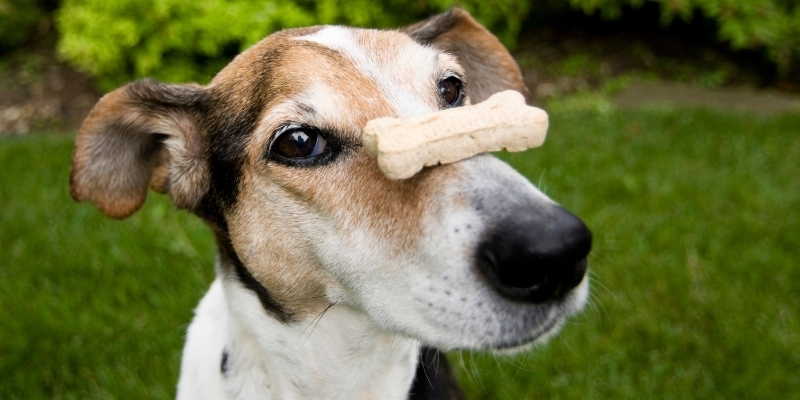
|
| |
A bad case of the wobbles
|
|
| |
|
|
| |
One of the more common emergencies we see in older dogs is the sudden onset of generalised wobbliness due to a condition called idiopathic vestibular disease (IVD). Here’s what to watch out for in your more senior pets:
What is IVD?
Idiopathic vestibular disease involves a sudden disruption of the regular internal balancing system, leading to wobbliness, falling or rolling over, a head tilt and regular “ticking” eye movements (nystagmus).
Unfortunately, the exact cause of the condition is unclear.
How do we diagnose IVD?
IVD is often strongly suspected based on the sudden development of wobbliness, a head tilt and nystagmus in an older pet.
However, because other health issues can cause similar symptoms, vets should perform additional testing to help confirm our suspicions, starting with a complete physical examination of your pet. As part of this examination, we will check your pet’s ears and test their brain and nerve functions. Any unexpected abnormalities in their movement or reflexes could suggest a different brain or spinal disease, whilst a visible ear infection could suggest a middle or inner ear problem as the cause of their wobbliness.
We may also suggest blood tests to ensure your pet isn’t suffering from other organ diseases - especially if your pet hasn’t undergone a blood test for some time.
Can IVD be treated?
There is no specific treatment for IVD, but the good news is that most pets will recover with good supportive care. Our vets can prescribe anti-nausea medications to ease your pet’s discomfort and advise on how to best nurse them, including assistance with feeding, keeping them hydrated, aiding them with toileting, and keeping them comfortable and clean on padded bedding.
If you have concerns about your older pet’s mobility or comfort, contact our steady team for a helping hand! |
|
|
|
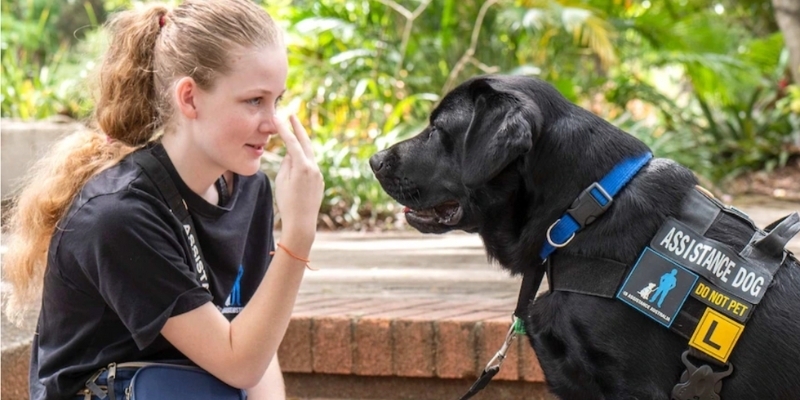
|
| |
Animal News In Brief
|
|
| |
|
|
| |
Benefits to the autism community as assistance dogs increasingly take on more significant societal roles.
Meet Onyx, a two-year-old black labrador and a certified assistance dog to a 13-year-old Bundaberg local and young autistic woman, Summer Farrelly. Since many autistic people experience heightened sensory awareness and rapidly process overwhelming amounts of sensory information that often leads to physical and emotional exhaustion, having a certified support animal can be hugely helpful. "What [Onyx] does is he can identify my emotions before I identify them, which means he can tell me how I'm feeling, so I can regulate myself better, and from that information, I can work out whether I need to leave or if I'm doing too much," said Ms Farrelly. Not only is Onyx a fantastic regulator of Summer's emotions, but he’s also just as good at helping her regulate her screen time! "When I go to bed with any sort of device, he will bark until I put the device down because he wants me to close my eyes and sleep," she said. Canine explosives detection handler turned assistance dog trainer Claire Turner was responsible for placing Onyx with Summer and has become Summer's mentor in animal handling. "We work a lot with older people, but my passion with canine assistance is to mentor the next generation," said Ms Turner. "Summer and this age group are the future. If they are starting to find self-care through assistance dogs and they get on top of it, society will be a better place."
Read the ABC News article to find out more about Summer, Onyx and the assistance dog program.
Photo credit: ABC Wide Bay: Brad Marsellos
Pet owners pay $15,000 for designer dogs
Designer bags and shoes have long been a luxury status symbol accessible to only the wealthy. Still, designer dogs are fast becoming an accessory to many families, and they’re just as expensive and sought-after. Indeed, since the coronavirus pandemic, would-be dog owners around Australia are forking out 'Oodles' of money for Groodles, Spoodles and Cavoodles. Demand is so high that the number of applicants on many breeder waiting lists has grown into the hundreds. Amanda Wilkinson is a South Australian Groodle (poodle and golden retriever cross) breeder. She believes the sharp rise in the cost of puppies is partly due to opportunistic breeders and buyers willing to pay any price. "We have seen the prices go from $3,500, which is standard, to $7,500, to the $15,000 mark," she said. "Whilst breeders are at fault for charging those prices, so are the consumers for paying it — if people weren't paying $7,000 for a dog, they wouldn't be charging it." 'Oodle' breeds have increased in popularity due to their charming, lovely nature and obvious cuteness. But does this sharp rise in rates suggest that some breeders are more concerned about their hip pocket than the safety and suitability of the homes they place puppies into? "They are a beautiful breed of dog… but… the families that the puppy is going to should override this ridiculous price that people are asking," said Ms Wilkinson. For our two cents, we think what's most important for any dog, 'designer' or bitzer, is that it's well looked after and loved. As the singer Kinky Freidman once said, "Money can buy you a fine dog, but only love can make him wag his tail."
Click here to read ABC News article about the price of designer dogs
Dog digs to safety after 60 hours trapped underground
For most people, digging themselves into a hole they can't escape from is just a turn of phrase for an awkward or unfortunate social situation. Luckily for ''Bear'' the Cavapoo, who found himself trapped underground in Aberdeen in a literal hole for around 60 hours, digging his way out was no problem - even on an empty stomach! Bear went missing midway through a rambling walk through Seaton Park with his owner Dasha Samatonia. Ms Samatonia had been on holiday with a friend and their dog ''Lulu'', however the holiday worsened when the two dogs wandered away, but only Lulu returned. Local townsfolk, business owners and the fire bridge joined the search for Bear. Still, Lulu would ultimately lead the group back to his location - down a hole in an abandoned site. "She was very persistent in going down the hole," said Ms Samatoina, "The thought of him being down there in the cold and dark terrified me. I think he was a few feet down because his bark was quite muffled." Encouraged by the sound of Ms Samatonia's voice calling out to him, Bear managed to dig his way up, out and into her arms. Safely above ground, Bear was taken straight to the vet for a quick check-up, where he received treatment for dehydration, sandy eyes and a few scratches on his nose, but was otherwise healthy. "It is amazing how strong he is to dig himself out after three days with no food or water," said Ms Samatonia.
Read the BBC news article and dig deeper into the details of Bear’s story. |
|
|
|
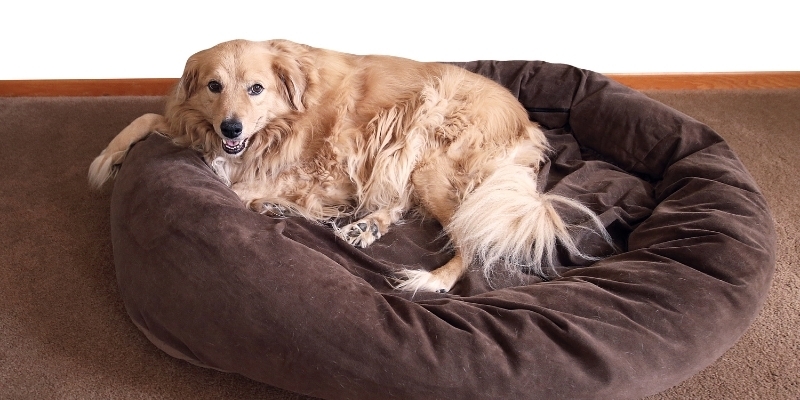
|
| |
Five “home comforts” for old pets
|
|
| |
|
|
| |
As well as attending 6-12 monthly veterinary check-ups (so we can manage any developing health issues), you can help support the health of pets aged eight years and older on a day-to-basis too!
Our senior-savvy team have compiled a list of five simple aids to keep your pet feeling comfortable and sprightly in their home environment:
Night lights
Older pets commonly develop a condition called nuclear sclerosis, where their eyes gradually become cloudy due to natural age-related degeneration (although nuclear sclerosis isn’t the only cause of cloudy eyes, so always consult a vet to confirm).
Nuclear sclerosis isn’t harmful but can reduce your pet’s vision in dim lighting. Purchasing motion-activated night lights and placing them around your pet’s sleeping area, water bowls, and along the route to their toileting location can help them to navigate more confidently.
Non-slip matting
Due to joint issues and reduced strength and coordination, older dogs can find walking on slippery floors difficult or even scary!
Suppose your pet is showing hesitance on smooth floors. In that case, we’d recommend purchasing cheap non-slip matting to make safe walking tracks along their standard routes.
Non-slip ramps
Many older cats and dogs suffer from chronic hip or back discomfort, making it harder for them to jump up for snuggles with their favourite person (you!).
Non-slip ramps can help pets safely get on and off higher resting surfaces and help dogs get in and out of the car.
Raised bowls
Many older large-breed pets appreciate not having to lean right down to eat and drink. You can purchase fancy raised bowls or go DIY with sturdy boxes or pavers.
Thick bedding
Who doesn’t love a soft, supportive bed? Thick bedding (such as memory foam) will be extra kind to your pet’s old joints and bones, helping them to feel more mobile and comfortable.
For more tips on senior health support, contact our old pet-friendly team. |
|
|
|
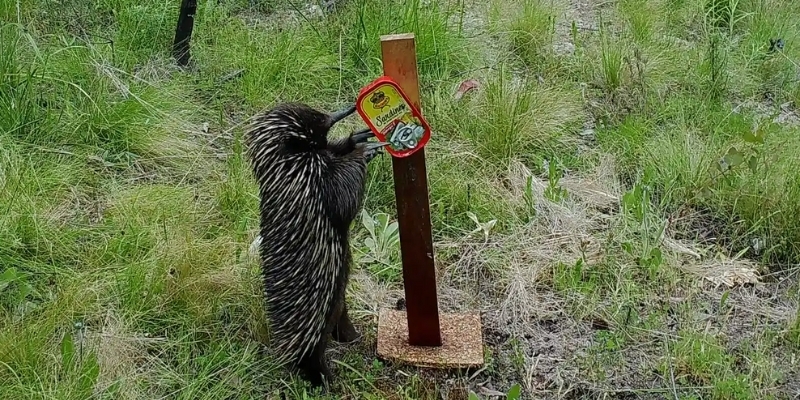
|
| |
Life after bushfires - moving images as Australian animals rebuild
|
|
| |
|
|
| |
Google artificial intelligence (AI) technology is helping researchers learn more about Australian wildlife behaviour. The World Wildlife Fund's 'Australia's Eyes on Recovery Program' aims to collect intelligence in the areas most ravaged by bushfires in recent years to allow conservationists to better understand how the wildlife population is recovering.
The AI, called 'Wildlife Insights', can recognise over 150 Australian animals with more than 90% accuracy and has already analysed seven million photos from 1100 sensor-activated cameras dotted across bushfire-affected areas.
Not only are the insights provided by the study valuable for the WWF researchers, but as a side result, they're also adorable. Pictures published range from rare echidnas, kangaroos and dingoes in Victoria, a wombat with her joey in New South Wales, to koalas in Queensland and even a wedge-tailed eagle peering, selfie-like, down the barrel of a camera in Kangaroo Island! However, the cameras also picked up multiple pictures of feral species, including cats, foxes, pigs, and cane toads. "What we're really hoping for is that these results can help to inform future fire events, which we will expect to get a lot more of due to climate change," said Dr Emma Spencer, coordinator of the research program. "We've had three years of heavy rainfall, and in some cases, we've actually seen big booms of animals because of that. We've also seen huge growth of vegetation, which means higher bushfire risk – potentially this summer," said Ms Spencer.
Click here to catch up on The Guardian’s coverage of the Australia’s Eyes on Recover Program.
Photo credit: World Wildlife Fund
|
|
|
|
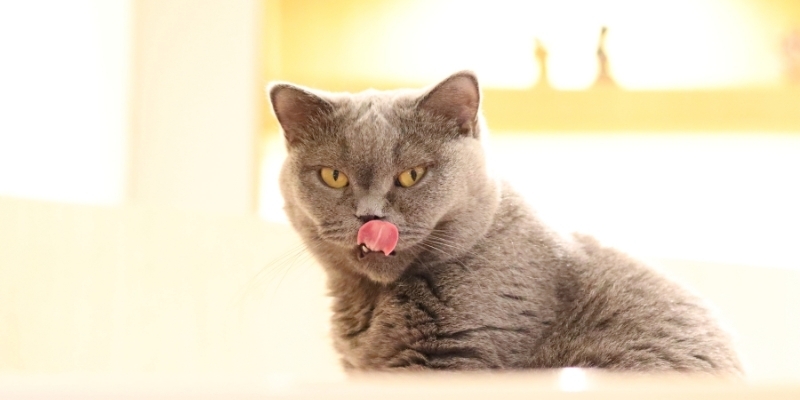
|
| |
The skinny on Slinky
|
|
| |
|
|
| |
Slinky the 14-year-old domestic shorthair cat,, had always sported a sleek, shiny coat. However, her owner Audrey noticed that Slinky's fur had started looking a little unkempt and dull over the last few months. The cat also appeared to have gradually lost weight, despite being as keen to eat as ever.
Audrey decided to book Slinky in for a veterinary check-up. Upon spotting her cat carrier, Slinky initiated a cheeky game of hide-and-seek but was eventually successfully deposited into the box and transported to the clinic.
Dr Jones, the vet, examined Slinky and found that she had lost about 400g since her last weigh-in (nine months ago). Through discussion with Dr Jones, Audrey recalled that Slinky had also likely been drinking more water than she used to.
Dr Jones discussed the potential causes of weight loss and increased drinking in older cats, the most common of which are:
- Chronic kidney disease
- Hyperthyroidism (an overactive thyroid gland)
- Diabetes
- Gut disease
Audrey consented to general blood tests to assess Slinky's organ function and thyroid hormone levels. Dr Jones also mentioned the possibility of an abdominal ultrasound if the blood tests showed no significant findings.
Slinky's blood tests showed normal kidney function but significantly increased thyroid hormone levels indicating hyperthyroidism. They also showed mild liver changes, thought to result from the thyroid condition.
Dr Jones discussed the options for treatment of Slinky's condition, which included management with a long-term medication or prescription thyroid diet, or referral for one-off radioactive iodine treatment, which can achieve a permanent cure.
Audrey and Dr Jones agreed to start Slinky on oral medications to assess her initial response to treatment. After a month of treatment, Slinky showed good improvement on her recheck blood tests and a bit of healthy weight gain, so Audrey elected to continue this management option long-term.
Slinky is now sleek and shiny once more and seems generally happy and healthy. However, she still doesn't appreciate the cat carrier!
|
|
|
|
| |
This email contains comments of a general nature only and is not intended to be a substitute for professional veterinary advice. It should not be relied on as the basis for whether you do or don't do anything.
All content © PetPack 2022 |
|
|
|
[Footer]
|